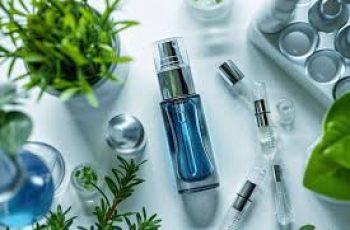
How To Treat Melasma From The Inside
Melasma is notoriously stubborn and often resists skincare treatments alone, so treating it from the inside with dietary changes, supplements, vitamins, and oral therapies can significantly boost results.
The most effective natural approach to reducing melasma includes limiting exposure to sun, heat, and visible or infrared light through sun avoidance and daily use of broad‑spectrum sunscreen every single day without exception.
Combining a melasma‑targeted skincare routine with oral supplements, vitamins, or prescription pills ensures a dual approach—external skincare works on pigment at the surface while internal agents influence systemic inflammation and hormonal balance.
Treating melasma from both the outside and the inside, as well as making lifestyle adjustments like stress reduction and dietary improvements, helps achieve faster, longer‑lasting fading of pigment.
Inflammation and Melasma
Melasma is exacerbated by inflammation both within the skin and systemically, so any internal intervention that decreases inflammation may help reduce pigmentation over time.
Systemic inflammation is not definitively proven to cause melasma, but inflammation is known to accelerate skin pigmentation and aging, so reducing inflammation internally is always a beneficial strategy.
Effective ways to reduce inflammation include taking antioxidant and anti‑inflammatory supplements, lowering stress, sleeping at least seven hours, and eating a diet high in fruits, vegetables, omega‑3s like salmon or flax.
Serum Lipids, Thyroid, and Liver Function
Research suggests people with melasma may have elevated LDL cholesterol compared with those without melasma, though further evidence is needed to establish causation.
Some studies, including one in India, reported an association between melasma and hypothyroidism or autoimmune thyroid disease, prompting recommendation of thyroid function testing for affected individuals.
A 2021 study found no correlation between melasma and liver dysfunction or metabolic syndrome, indicating melasma does not signal underlying liver disease or broader poor health.
Food and Supplements for Melasma
While certain vitamin deficiencies like low B12 or iron have been observed in people with melasma, the evidence is insufficient to confirm they cause melasma or that supplementation alone will resolve it.
Vitamins and supplements with antioxidant and anti‑inflammatory activity may help melasma by reducing oxidative stress and soothing underlying inflammation known to stimulate melanin production.
Melatonin for Melasma
Melatonin has been discussed as a potential internal melasma treatment due to its antioxidant and UV‑protective properties, though evidence remains conflicting and its effect on pigmentation is uncertain.
There is a theoretical concern that melatonin may increase melanocyte‑stimulating hormone and melanin production, possibly worsening melasma in some people, so cautious evaluation is advised.
At present, the safest recommendation is to rely on proven topical melasma skincare routines rather than introducing melatonin supplements internally until more research clarifies its effects.
Vitamins A, B5, B12, C, and E
Vitamin A in oral form (above 10,000 IU) is not used for melasma due to toxicity risk, but topical retinoids (derived from vitamin A) help by increasing exfoliation and blocking melanin synthesis.
Vitamin B5 (pantothenic acid), typically used as topical panthenol, has anti‑inflammatory and moisturizing benefits; while oral B5 lacks direct evidence for melasma treatment, its anti‑inflammatory effect may be helpful.
Vitamin B12 deficiency has been observed in some melasma cases, particularly in individuals with darker skin tones, but there is no strong evidence that B12 supplementation by itself reduces melasma.
Vitamin C (ascorbic acid) is a well‑established tyrosinase inhibitor and antioxidant that blocks melanin production; an effective oral dose would be 500 mg twice daily, ideally paired with topical Vitamin C serum.
Vitamin E is an antioxidant found in many foods and supplements; although it reduces inflammation, research suggests dietary sources of Vitamin E are better used for general skin support rather than as a stand‑alone melasma pill.
Zinc and Melasma
Some early research showed a potential association between low zinc levels and melasma; however, subsequent studies have shown no significant difference in zinc status between melasma and non‑melasma populations.
While zinc lacks robust evidence as a melasma treatment, it is considered safe and has mild anti‑inflammatory properties; therefore using zinc supplements may be a low‑risk supportive measure if deficient.
Antioxidants and Herbal Extracts
Dietary and supplemental antioxidants such as polyphenols found in green tea, pine bark extract (Pycnogenol), and Polypodium leucotomas extract have shown potential to reduce pigmentation by decreasing inflammation and UV‑related damage.
These antioxidants can be taken orally, applied topically, or both to help support skin against environmental factors that worsen melasma.
Tranexamic Acid as a Melasma Pill
Tranexamic acid, though not FDA‑approved specifically for melasma, has emerged as one of the most researched oral therapies with significant pigment‑lightening effects within a few weeks when used under medical supervision.
Studies suggest oral tranexamic acid improves melasma effectively and may also be administered via intradermal injection into pigmented areas in clinical settings to lighten melasma more quickly.
If melasma persists despite consistent skincare and lifestyle measures, discussing oral tranexamic acid with a dermatologist is advisable as part of a holistic melasma treatment plan.
Lifestyle Checklist to Treat Melasma Naturally
To tackle melasma internally and externally, limit exposure not just to sun but also heat, visible light (including screens), infrared, and pollution; even indoor light can aggravate pigment.
Reduce stress through techniques like meditation or mindful movement, sleep at least seven hours nightly, avoid smoking, and evaluate hormone status—especially estrogen or thyroid levels—to address endocrine contributors.
Avoid applying perfumed or fragranced products near your face, as they can heighten sun sensitivity; instead, use gentle products suitable for your Baumann Skin Type and aim to reduce inflammation, dehydration, or other skin triggers.
Integrating Internal and External Treatment
Even the most effective oral or supplement protocol will not achieve melasma clearance without a tailored skincare routine using tyrosinase inhibitors, retinoids, exfoliants, antioxidants, anti‑inflammatories, and daily sunscreen.
Your custom regimen should match your Baumann Skin Type, and you should track progress with hydration, inflammation markers, and monthly follow‑ups to adjust both topical and internal treatments.
Skin pigmentation tends to worsen before improving as deeper pigment migrates to the top layers; expect initial darkening for the first 4 weeks, with visible improvement by week 8 if your routine is effective.
Monitoring and Support
Taking baseline photos or using imaging like a Canfield Visia camera can help track pigmentation changes that are not noticeable to the naked eye, especially in the early stages of treatment.
Many melasma programs include ongoing support through monthly communication to guide you through regimen changes, answer questions, and maintain motivation and education for long‑term success.
Final Thoughts on Internal Melasma Treatment
Treating melasma internally requires a multi‑angle strategy: anti‑inflammatory diet and supplements, hormonal and thyroid evaluation, antioxidant support, and possibly tranexamic acid under medical supervision.
At the same time you must follow a consistent external skincare routine that includes proven dark spot correcting ingredients, strict sun protection, lifestyle modifications, and skin barrier care.
While there is no single cure for melasma, combining internal treatments with customized external care, lifestyle changes, and professional monitoring can control pigment, prevent recurrence, and significantly improve skin tone over time.


